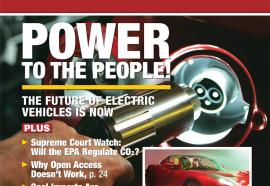Another Food Fight!
The new transmission siting and permitting policies could be just as messy and unruly as the old ones.
The idea behind the NIETC is a noble one: to help facilitate the construction of badly needed transmission capacity to relieve congestion problems and improve reliability. In fact, the promotion of new infrastructure investment is at the heart of EPACT. But there’s just one problem. The new process for permitting and siting electric transmission under EPACT appears to be as flawed and contentious as it was pre-EPACT.










